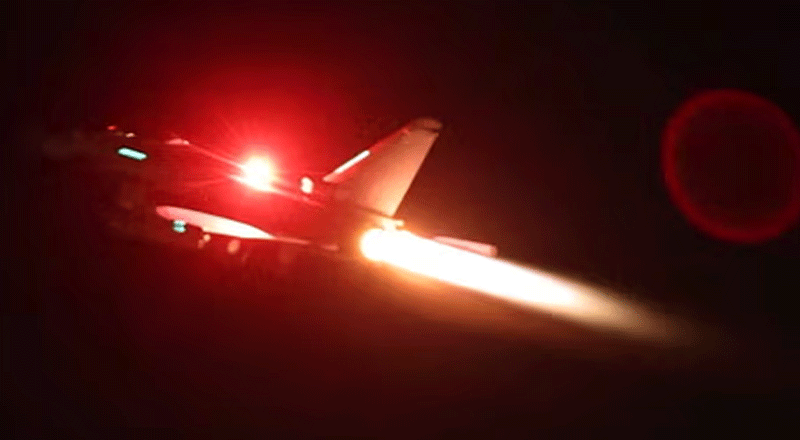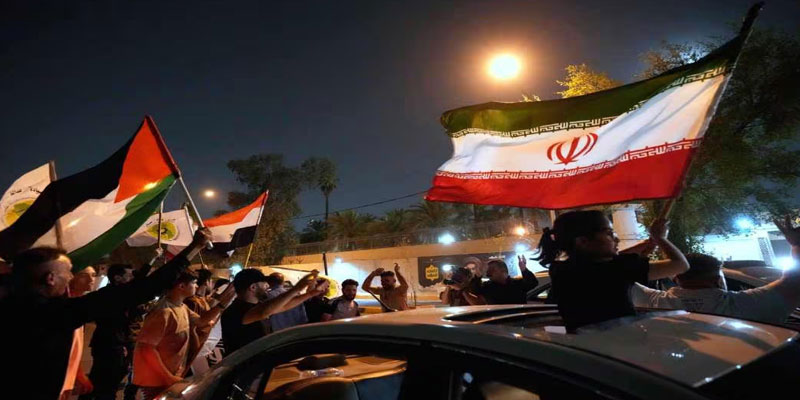Coalition Strike Targets Houthi Drone Site Near Sanaa
On April 29, 2025, the United Kingdom’s Royal Air Force (RAF) partnered with United States forces in a joint airstrike targeting a Houthi military facility in Yemen, a location allegedly used for manufacturing drones responsible for attacking commercial shipping in the Red Sea and Gulf of Aden.
The RAF Typhoon FGR4 jets, with refuelling support from Voyager aircraft, conducted a precision nighttime strike using Paveway IV guided bombs to minimize civilian risk. The target was located about 15 miles south of Sanaa, Yemen’s capital. According to the UK Ministry of Defence, the operation was based on “careful intelligence analysis” and was aligned with the UK’s ongoing policy to protect global maritime security.
Why the US and UK Are Attacking the Houthis
The airstrike comes in response to escalating Houthi aggression since November 2023, when the Iran-backed rebel group began targeting international vessels in the Red Sea—a critical global shipping route. The Houthis initially claimed their strikes were aimed only at Israel-linked ships amid the Israel-Gaza conflict, but their scope has since expanded to include vessels from multiple nations, endangering global commerce and navigation freedom.
Since March 15, the United States Central Command (CENTCOM) has led a campaign of more than 800 precision strikes against Houthi targets across Yemen. These strikes aim to reduce the Houthis’ capabilities, restore maritime safety, and deter Iran’s regional influence.
CENTCOM reports show positive effects: a 69% drop in ballistic missile launches and a 55% decrease in drone attacks on ships. Despite these results, CENTCOM emphasized that it would not disclose operational details to maintain tactical advantage.
The Houthis have controlled Sanaa since 2014 and are part of the broader Iranian proxy network. Their escalating attacks are widely viewed as part of a regional destabilization strategy, with Iran leveraging such groups to exert pressure on the West and its allies.
The Strategic and Economic Stakes
The Red Sea and Gulf of Aden are not just regional waterways—they are lifelines of global trade, with roughly 10% of the world’s shipping traffic transiting through the Bab el-Mandeb Strait. Any sustained disruption here affects oil prices, global supply chains, and economic stability.
This airstrike sends a clear signal: the UK and US are prepared to engage militarily to defend not only freedom of navigation but also global economic security. The use of advanced weaponry and precise planning indicates the seriousness of the threat posed by the Houthi drone program, which uses relatively low-cost unmanned systems to exert asymmetric pressure on much larger powers.
Critically, both countries took extra steps to avoid civilian casualties, striking only after dark and targeting specific military buildings. This reflects a continued commitment to international humanitarian law, even amid active military operations.
However, this strategy is not without risks. The Houthis may retaliate, or escalate their attacks in response. There’s also the broader geopolitical concern that Iran may view the strikes as provocations, further intensifying the Middle East’s security crisis.
What’s Next for the Yemen Conflict and Red Sea Security
This joint airstrike highlights a deepening UK-US military collaboration in countering regional threats. As Houthi capabilities are gradually degraded, the hope is to restore safe passage for international shipping and signal a firm deterrent to future attacks.
Yet, the long-term success of these strikes depends on several factors: Houthi response, Iran’s reaction, and the willingness of the international community to collectively address the security vacuum in Yemen.
For now, coalition forces have indicated that future operations remain on the table, with CENTCOM asserting that it will act deliberately and without public pre-announcements. As the situation evolves, the Red Sea may remain a strategic flashpoint—one where military precision must be matched with diplomatic resolve.
(With inputs from agencies)


















